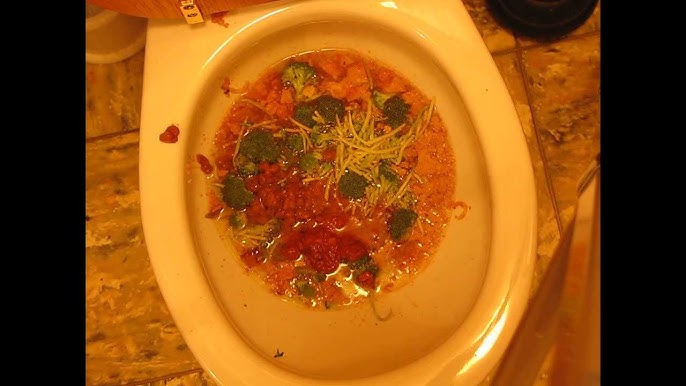Have you been searching for critical information involving Think Twice Before Flushing Food Down Your Toilet?

Introduction
Many people are usually faced with the problem of what to do with food waste, specifically when it involves leftovers or scraps. One usual concern that develops is whether it's fine to purge food down the commode. In this short article, we'll look into the reasons people might consider purging food, the consequences of doing so, and alternative methods for correct disposal.
Reasons why people may take into consideration purging food
Absence of recognition
Some people might not understand the prospective injury brought on by purging food down the bathroom. They may incorrectly think that it's a harmless practice.
Benefit
Purging food down the bathroom may appear like a quick and easy service to getting rid of undesirable scraps, especially when there's no neighboring trash can available.
Idleness
In many cases, people may simply pick to flush food out of large idleness, without thinking about the repercussions of their activities.
Repercussions of flushing food down the toilet
Environmental effect
Food waste that winds up in waterways can add to pollution and injury aquatic ecological communities. Additionally, the water used to flush food can stress water sources.
Pipes problems
Flushing food can bring about clogged up pipelines and drains, triggering pricey plumbing fixings and hassles.
Kinds of food that ought to not be purged
Fibrous foods
Foods with fibrous structures such as celery or corn husks can obtain tangled in pipes and cause clogs.
Starchy foods
Starchy foods like pasta and rice can soak up water and swell, causing blockages in pipelines.
Oils and fats
Greasy foods like bacon or food preparation oils should never be flushed down the commode as they can strengthen and cause blockages.
Proper disposal techniques for food waste
Making use of a garbage disposal
For homes outfitted with garbage disposals, food scraps can be ground up and purged with the pipes system. Nonetheless, not all foods are suitable for disposal in this fashion.
Recycling
Particular food product packaging products can be reused, lowering waste and decreasing ecological effect.
Composting
Composting is an environmentally friendly method to get rid of food waste. Organic materials can be composted and made use of to improve soil for gardening.
The importance of correct waste monitoring
Reducing environmental injury
Proper waste monitoring techniques, such as composting and recycling, assistance reduce air pollution and preserve natural deposits for future generations.
Shielding pipes systems
By avoiding the method of flushing food down the commode, property owners can stop expensive plumbing repairs and maintain the integrity of their plumbing systems.
Final thought
In conclusion, while it might be alluring to purge food down the bathroom for ease, it is essential to comprehend the prospective effects of this action. By adopting correct waste administration techniques and taking care of food waste responsibly, people can add to much healthier plumbing systems and a cleaner environment for all.
FLUSH FOOD DOWN THE TOILET?
FLUSHING FOOD CAN CAUSE BLOCKED DRAINS IN YOUR HOME
All of the plumbing fixtures in your home are connected to the same sewer pipe outside of your home. This outdoor sewer pipe is responsible for transporting all the wastewater from your home to the Council sewer mains. Even small pieces of food that go down the kitchen sink can cause problems for your sewer. It should therefore be obvious that flushing larger bits of food, such as meat, risks a clog in either the toilet itself or the sewer pipes. Flushing greasy food is even more problematic because oil coagulates when it cools, coating the interior lining of your pipes.
THE TOILET IS NOT A BIN
Food isn’t the only thing that people shouldn’t be flushing down the toilet. People use the toilet to dispose of all kinds of things such as tampons, makeup wipes, dental floss, kitty litter and even underwear. Water goes to great lengths to educate residents about the high costs and stress placed on wastewater treatment systems simply from people flushing the wrong stuff down the toilet. It costs taxpayers millions of dollars each year, and homeowners thousands in blocked drain repairs.
FLUSHING FOOD IS A WASTE OF WATER
Flushing food is a waste of our most precious resource - water. In June this year Level 1 water restrictions were introduced to protect water supply from drought conditions. Much of New South Wales continues to be affected by prolonged drought with recent figures revealing up to 97 per cent of the state remains in drought. Depending on whether you have a single or dual flush toilet, every single flush uses between five and 11 litres of water. In the current climate this is a huge amount of water to be wasting on flushing food that should be placed in the bin (or better yet, the compost).
https://www.jabplumbingsolutions.com.au/blog/can-you-flush-food-down-the-toilet

I came across that entry about Think Twice Before Flushing Food Down Your Toilet when doing a search on the search engines. For those who liked our blog entry if you please make sure you remember to pass it around. We enjoy reading our article about Flushing Food Down the Toilet?.
Call Today